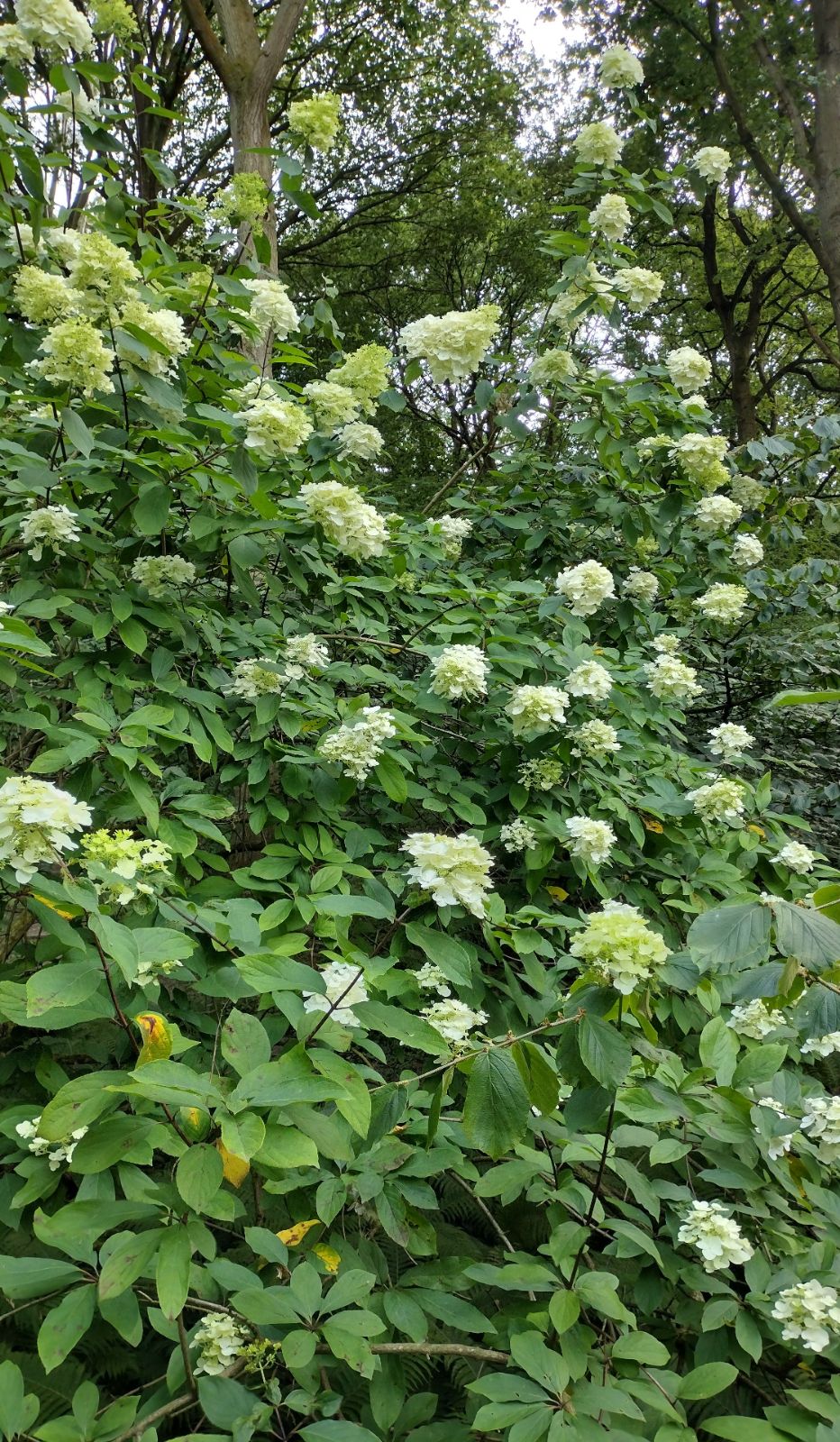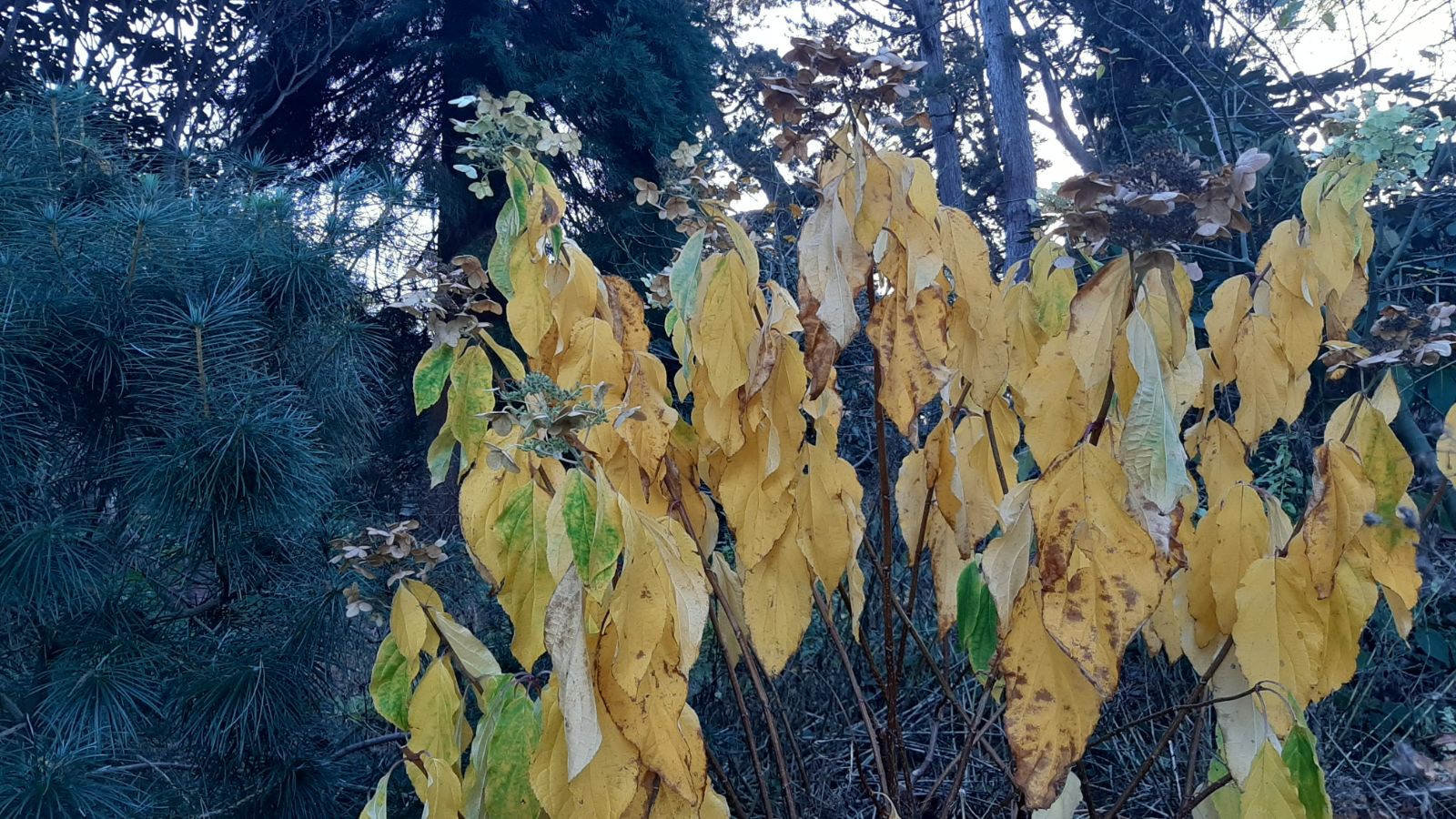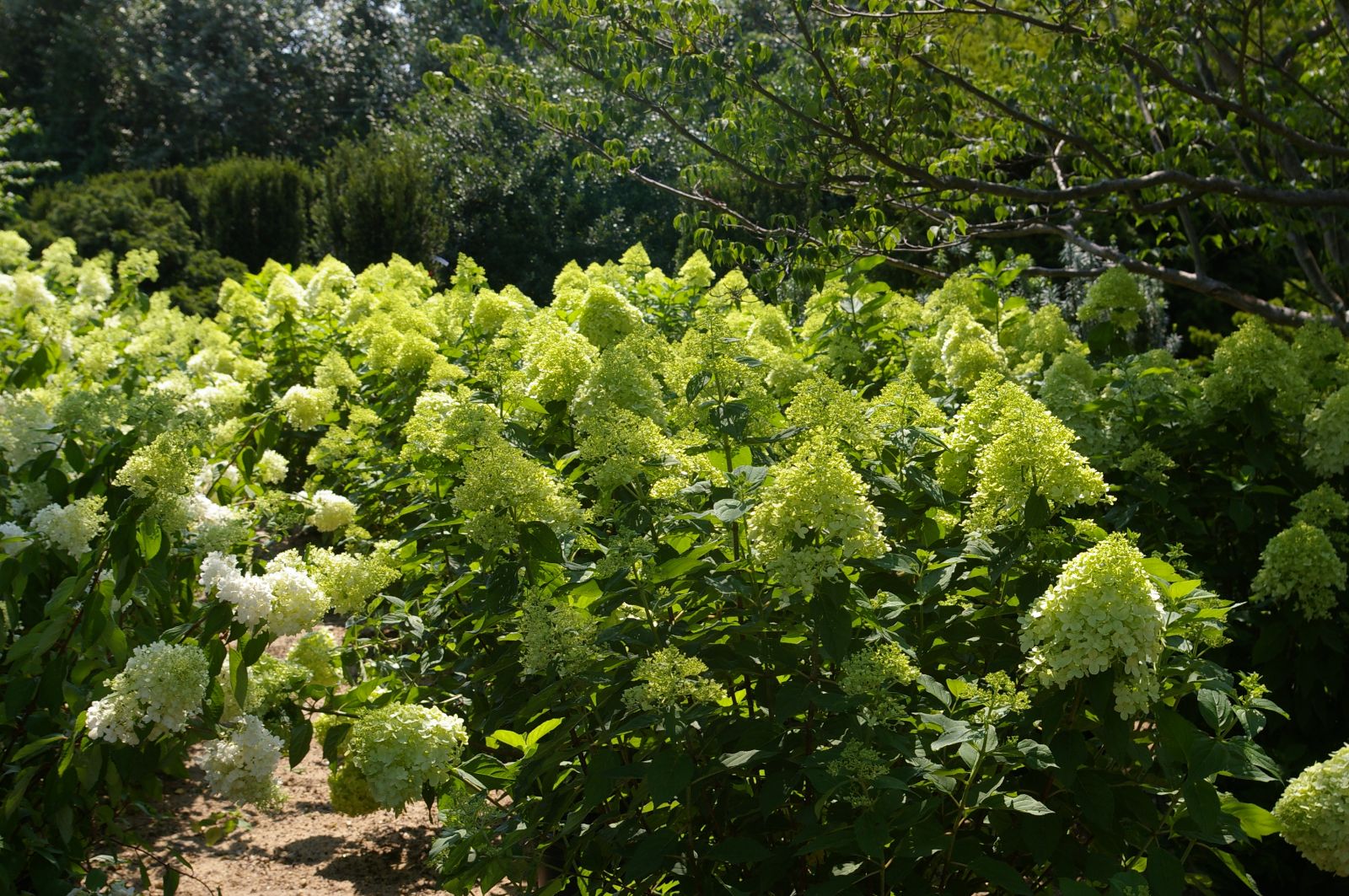Hydrangea paniculata
Sponsor
Kindly sponsored by
This genus has been sponsored and new text is being prepared.
Credits
Article from Bean's Trees and Shrubs Hardy in the British Isles
Recommended citation
'Hydrangea paniculata' from the website Trees and Shrubs Online (treesandshrubsonline.
Genus
Infraspecifics
A deciduous shrub, sometimes tree-like, and 12 to 20 ft high; young shoots at first downy, becoming glabrous. Leaves often in threes, oval or ovate, tapered at both ends, or rounded at the base, toothed; 3 to 6 in. long, 11⁄2 to 3 in. wide, with scattered, flat, bristly hairs above, and pale bristles on the veins beneath; stalk 1⁄2 to 1 in. long. Panicles pyramidal, varying in size according to the strength of the shoot, usually 6 to 8 in. long, two-thirds as wide at the base. A few of the outermost flowers sterile, 3⁄4 to 11⁄4 in. wide, white changing to purple-pink; the small fertile flowers yellowish white; flower-stalks downy.
Native of Japan, Sakhalin, and of eastern and southern China. It was introduced in 1861, but the normal wild form, in which the inflorescences are sparsely furnished with ray-flowers, has never been common in cultivation. The flowering branch figured in the Botanical Magazine is from a plant growing in Captain Collingwood Ingram’s garden at Benenden, Kent, originally collected by him as a seedling on Aso-san, a volcano in Kyushu. This specimen was received at Kew in July and it appears to be in this month and in August that it normally flowers in cultivation. The species appears to be variable in habit in the wild. Sargent saw it as a tree 25 to 30 ft high in central Hokkaido, but Siebold described it as a lax shrub up to 6 ft high. It is also variable in foliage; the leaves on the Benenden plant are glabrous and glossy above and long-acuminate at the apex – hence very different in appearance from those of the cultivars.
'Floribunda'
Ray-flowers more numerous than in thenormal form, but not so numerous as to conceal the fertile flowers. Sepals of ray-flowers {5/8} to {3/4} in. long, mostly broad-elliptic to rounded, four or five in number, overlapping. A beautiful hydrangea, flowering end July into September. Award of Merit 1953. It agrees well with the plant described by Regel under the name H. p. var.floribunda and figured in Gartenflora, Vol. 16 (1867), t. 530. The hydrangea figured in Gardeners’ Chronicle, Dec. 5, 1925, facing page 448, as H. paniculata simply, appears to be ‘Floribunda’.'Grandiflora'
A form introduced from Japan about 1870, in which all, or nearly all, the flowers are sterile and large, forming a closely packed pyramid of blossom at first white then purplish pink, finally brown This variety is undoubtedly the most showy of hydrangeas in localities where the hortensias cannot be grown. To obtain it at its best, it should be planted in good loamy soil, rich, but not too stiff. The shoots should be pruned back in spring before growth recommences, and after the young shoots are a few inches long the weakest should be removed. If very large panicles are desired the shoots may be reduced to six or ten on plants 1 to 2 ft high – more for larger plants. A mulching of rotted manure should be given when growth is well started. Such treatment will produce panicles 18 in. high, and 12 in. through at the base. The typical form may be treated in the same way. To many people’s taste these monstrous panicles may be objectionable, and to my mind a bush moderately thinned, or not at all, is more elegant and pleasing. Hard pruning and thinning tends to shorten the life of these plants.



